How we support an ancient culture
We are excited to tell you the story of our weaving project that supports traditional Q’ero culture. In this issue we share:
- Q’ero Textiles are Cultural Narratives
- How We Support an Ancient Culture (video)
- A Few Symbols in Q’ero Textiles
Q’ero textiles are rooted in pre-Inka weaving traditions that use imagery as a form of visual language. When we look at a Q’ero weaving, we are viewing a narrative about the role of humans in the universe and the meaning of life. The beautiful colors, symbols, textures, fields, and patterns of a Q’ero weaving all contribute to a unifying narrative of Andean life and the mystical Q’ero cosmovision.
Like a poem, the overall creation of a textile tells a story that is larger than the individual parts. Contemporary Q’ero textiles use fields of color, symbols, and organizational layout to convey concepts concerning seasons, time, space, agricultural practices, mythic history, and world view.
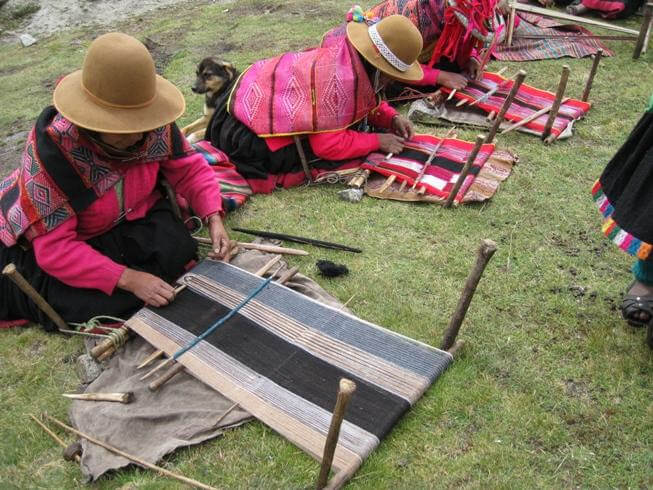
Each textile is a unique expression of the weaver. The artistic expression of each weaving can provide a glimpse into this pre-European culture in which knowledge, stories, meanings and relationships are integral to Q’ero life.
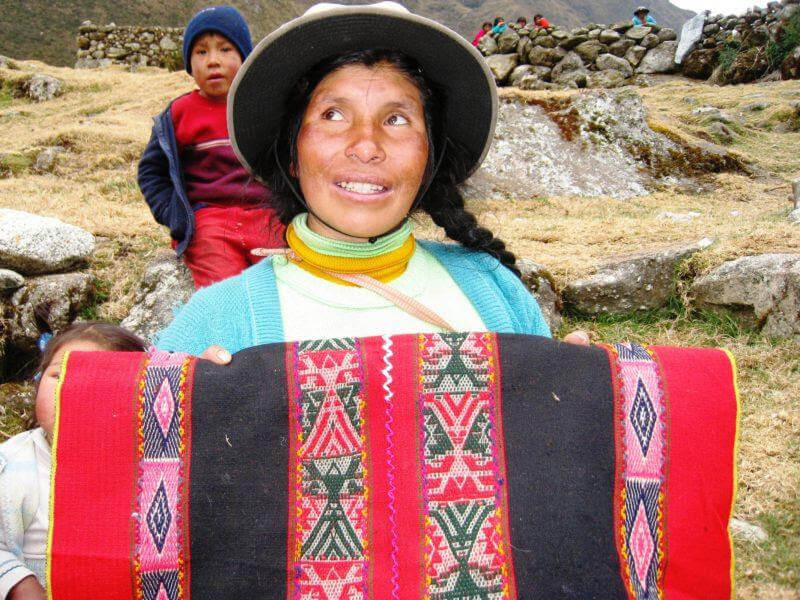
All elements in Q’ero textiles represent the inherent balance and harmony of the universe. Some elements even reflect the community’s ideas about fertilization, growth, death and regeneration.
Although we “westerners” are not adept at reading the stories in the textiles, when we touch one of these exquisite pieces, our hearts respond to the beautiful aesthetics of each creation.
How We Support an Ancient Culture
In these rapidly changing times, modern economic pressures and 21st Century social norms put constant pressure on Q’ero communities and culture. Our tribalstore.org is intended to help preserve and promote this traditional art and bring income to weavers and their communities.
We tell our story here.
You can invest in the stability of these communities by purchasing their woven narratives — their textiles — as an appreciative “audience.”
Shop Q’ero handicrafts TribalStore.org
The full price of your purchase goes to the weaver, her family, and her community for projects to support education, nutrition, health care, and traditional cultural.
A Few Symbols in Q’ero Textiles
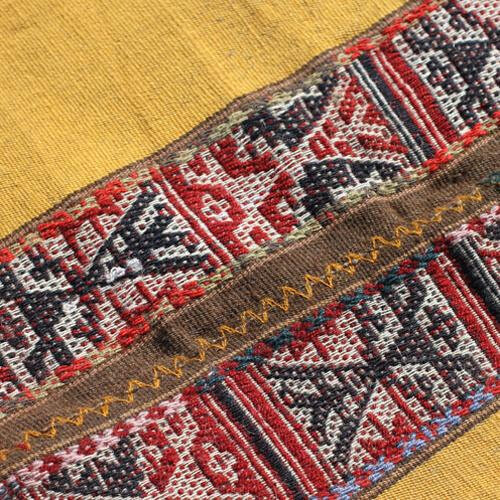 Inkarri, depicted by a chunchu dancer.
Inkarri, depicted by a chunchu dancer.
Inkarri is a cultural hero, the last Inka king. The Q’ero weave several variations of Inkarri, including some that show him as decapitated. After being executed by the Spanish, the last Inka’s body parts were buried in various locations. Q’ero stories tell that when his head and body are reunited, Inkarri will return to save the people from colonial domination.
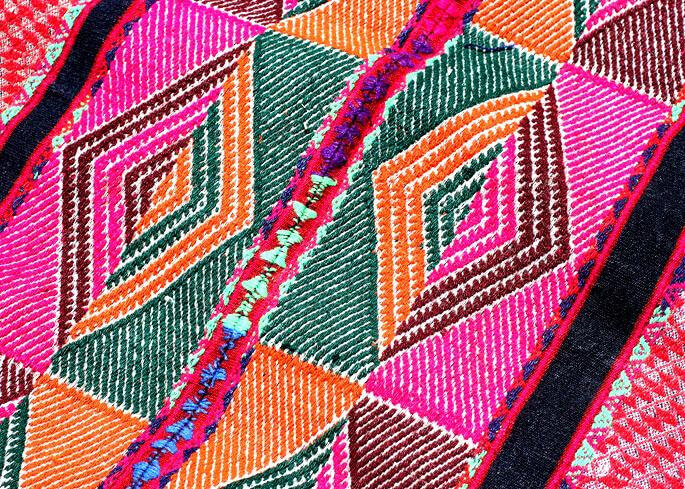 Q’ocha or lake motif
Q’ocha or lake motif
The q’ocha design is a predominant motif in Q’ero textiles. The Quechua word q’ocha refers to a lake, mountain lagoon, or pool. It can even refer to the ocean. The life giving element of water is depicted by symmetrical zig zag lines, usually in contrasting colors.
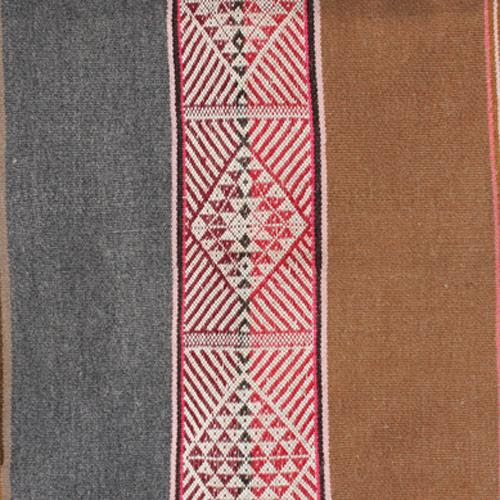 Chili motif
Chili motif
The chili design is named for a red flower that grows in the Andean jungle. This flowing pattern lined with small shapes evokes what Cohen calls, “a visually charged field of active energy rather than a single isolated symbolic representation.”
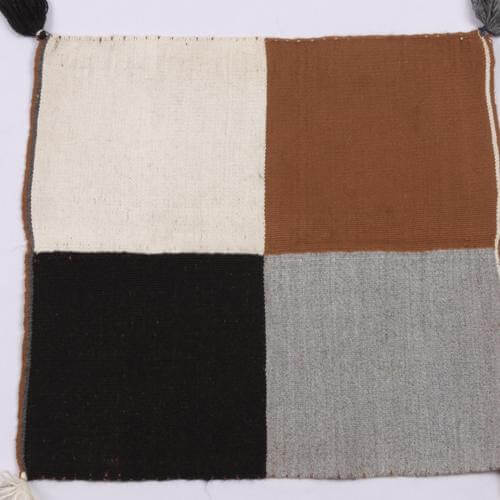 A quarter panel or carrying cloth
A quarter panel or carrying cloth
Behind the simplicity of design in an Unkuna or Wayaqua despacho cloth is a style of weaving only highly skilled weavers can achieve. Representing the four sections of the Taywantinsuyo or Inka Empire, the Q’ero use these to hold coca leaves, to use in coca leaf readings or stone divination, and for carrying a lunch of potatoes across the steep Andes mountainsides.
One of the most unique characteristics of Q’ero textiles and their symbology is that the primary patterns are carefully composed in order to appear the same on both sides. There is no right or wrong side on a Q’ero mestana.
Other symbolic representations in Q’ero weaving begin with the concept of ayni, wherein the two panels of the mesa cloth or mestana represent the complementary duality of male and female. The zig-zag line of thread holding the two panels together represents lightning. Wide bands often represent essential agricultural fields of corn or potatoes. A close series of colorful narrow bands reflects the Inka use of color to record tubers, corn, animals, water and soil types.
Learn more about the complex meanings inherent in Q’ero textiles and culture from the following resources:
A Woven Book of Knowledge, Gail P. Silverman, 2008.
Hidden Threads of Peru, Ann Pollard Rowe and John Cohen, 2002.
Discovery May Help Decipher Ancient Incan String Code, National Geographic.
Make a donation here to help the Q’ero people.
Not a U.S. resident? Donate through our TribalStore.org
Heart Walk Foundation: Weaving Hope in the Andes Since 2004
435.619.0797 | penelope@heartwalkfoundation.org |
heartwalkfoundation.org



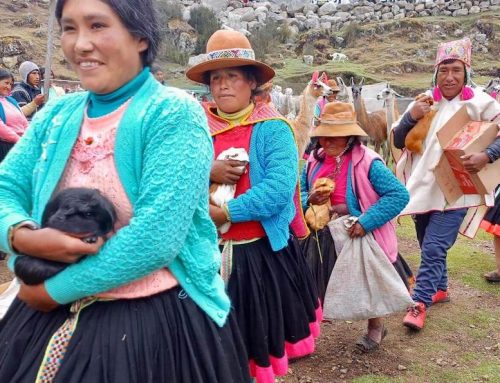


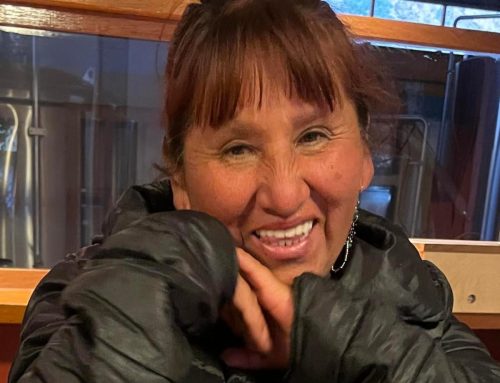
Leave A Comment